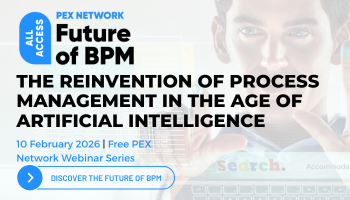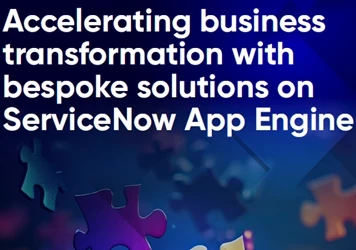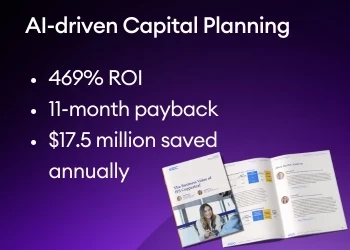Slow & steady wins the race: Why sustainable business transformation is cautious & purposeful
The organizations that endure are those that invest time in understanding processes, aligning people, and embedding change at a pace the business can absorb
Add bookmark
Business transformation has become synonymous with agility, speed, and exciting buzzwords. Executive teams and management boards demand rapid returns, consultants promise fanciful ‘artificial intelligence (AI) in 90 days,’ and technology vendors assure immediate benefit through automation.
Yet for every transformation story of success, there are far too many examples of failed initiatives, fragmented systems, disillusioned teams, and legacies of chaos.
The truth is simple but often misunderstood: sustainable transformation should not be fast. The organizations that endure are those that invest time in understanding their processes, aligning their people, and embedding change at a pace the business can absorb.
‘Slow and steady’ does not mean resistance to progress, but instead a strategy for long-term resilience and success. Ultimately, sustainability over immediacy.
Join the PEX Network community

Don't miss any news, updates or insider tips from PEX Network by getting them delivered to your inbox. Sign up to our newsletter and join our community of experts.
Learn MoreTransformation is not a technology project
Many transformation initiatives start with an irresistible proposition: AI, robotic process automation (RPA), or hyperautomation that promise to revolutionize productivity and deliver earth-shattering return on investment, but these solutions are very rarely silver bullets.
Without stable processes and clear governance, they often accelerate inefficiencies rather than resolve them, leaving senior leaders to think that the solution has made things worse, whereas the bedrock of success was never there. Ultimately, the groundwork (the ‘boring stuff’) hadn't been given the attention it so desperately deserves.
Consider the hypothetical scenario of a nationwide UK retailer, trying to implement RPA to handle its order processing. Initially, dozens of simulated virtual workers might reduce manual workload. However, because upstream data entry processes vary across stores, with no thought given to standardization of processes, the automation quickly encounters exceptions.
Instead of freeing people to focus on value-add tasks, teams encounter an overnight shift to spending their time maintaining virtual employees and attempting to correct errors. The ultimate downfall here is a lack of holistic and critical thinking. What goes on upstream and downstream? What are the hand-offs? Where are the variations in process and how much of the working volume actually accounts for that holy grail of ‘one single process variation’? At this point, I recommend a quick Google search for process mining.
On a similar level, take the example of Starbucks or everybody’s favorite chicken chain Nandos, both of whom are well known for their rewards platforms. Whilst these are now app-based entities, living in our Apple Wallets, they started life as scraps of card and stamps. Organizations had to walk before they could run, and that journey curated a winning, transformative, and iterative mindset. Tomorrow’s innovation is only possible because of today’s app, and because of yesterday’s stamp!
These examples underscore a fundamental truth. Technology amplifies the quality of what already exists, but mindset and culture are everything. That poorly designed or inconsistent processes, once automated, can scale chaos rather than drive efficiency.
Register for All Access: AI in Business Transformation 2026!
Laying the foundations: Stop, standardize, optimize, then automate
My first question to any team or executive is “what can we STOP doing?” Anything in this category is waste and should be treated as such. Far too many employees (and organizations) worry about work that simply doesn’t add value. Stop it.
For example, within the hospitality industry, several high-profile hotel groups have discovered that by simply redesigning their check-in and room allocation processes, and specifically removing certain processes or propositions, they could cut guest waiting times dramatically, long before deploying an automated solution. When automation was eventually introduced (i.e. tasks like digital check-in or billing reconciliation), it was built on processes already optimized for speed and simplicity.
This principle is paramount to the broader philosophy of business process management (BPM): map, measure, improve, and then automate, essentially providing a structured discipline that ensures every automation initiative is connected to a tangible business outcome.
Secondly, it is critical for organizations to understand and standardize processes before treading on the minefield of automation and AI. Standardization doesn’t mean rigidity; far from it. It means clarity, and it creates the foundation upon which automation (and more) can reliably operate.
Optimization follows suit, giving transformation aficionados the breathing space to simplify and improve processes. Call it continuous improvement, Lean Six Sigma, or anything else for that matter – it’s an opportunity to be more efficient, more organized, and far more focused on adding the bells and whistles that will start to get your audience excited. Only then can you start to think about the ‘fun’ stuff!
Join us at All Access: Future of BPM 2026!
The John Lewis Partnership and Ikea examples
The John Lewis Partnership, owner of both John Lewis and Waitrose, offers a thoughtful case study. Facing growing competition and changing customer expectations, the partnership has taken a measured approach to digital transformation. Rather than chasing flashy technology trends, it has focused on strengthening operational fundamentals.
Across its logistics and supply chain operations, John Lewis has been methodically standardizing warehouse and delivery processes. By harmonizing procedures across multiple sites and implementing consistent metrics, it has been able to identify where automation – such as AI-driven inventory forecasting – can genuinely add value. The result? Not just improved efficiency, but predictability and scalability.
Once standardization is achieved, automation becomes a multiplier rather than a patch. The organization has invested in AI and other solutions, but importantly, remains committed to fixing the root cause and building a sustainable operation.
Similarly, Ikea’s use of augmented reality (AR) blends the physical and digital worlds, allowing customers to display furniture (not meatballs!) in their living rooms. This didn’t happen overnight. Teams first had to go on a journey of process and proposition before AR could be put into the hands of Customers. It was successful because of the Customer-first mentality that was rife throughout.
Transforming scalable automation
RPA has matured over the years, from a ‘sticky plaster’ tool driven by tactility to an enterprise-wide transformation enabler. As organizations move toward an end-state of hyperautomation-driven transformation -the integration of RPA, AI, process mining, and low-code platforms – the need for caution becomes even greater.
Hyperautomation, RPA’s bigger, brighter, and more flamboyant big brother, can deliver transformative benefits when applied to stable process environments. It allows businesses to integrate human judgment with machine efficiency and drive intelligent decision-making across complicated workflows. However, if scaled prematurely, it will inevitably create fragmented architectures and unmanageable dependencies.
The approaches of John Lewis and Waitrose, as outlined previously, again illustrate sustainable progression. Instead of attempting to automate every process at once, they’ve focused on selective automation, targeting processes with high manual effort and low variability, such as invoice reconciliation or stock replenishment.
The goal isn’t full automation overnight, but measured, evidence-based expansion. Indeed, this journey first started with an intent of developing automation as a buzzword and making jobs easier. Only later did the ROI-chasing begin.
This method ensures that automation complements human capability rather than replacing it, and that it builds organizational confidence in digital tools, a crucial factor in sustaining transformation momentum.
AI is a capability, not a destination
AI holds transformative potential across retail, hospitality, and beyond, from dynamic pricing and personalized marketing to demand forecasting and sentiment analysis. However, AI’s success depends entirely on the integrity of the data and processes it draws from. Put rubbish in, get rubbish out.
Take predictive analytics in food retail. AI can help forecast demand for perishable goods with remarkable accuracy, but if store-level data is inconsistent or replenishment rules differ regionally, the model’s output will be flawed. Waitrose has addressed this by improving data governance and process uniformity across its supply chain before deploying advanced analytics. The result: fewer stock shortages, reduced food waste, and a better customer experience.
The same principles apply to all transformative opportunities. An AI-generated staff schedule is going to misplace employees, frustrate customers, and leave an organization in ruin if the data supporting the algorithm has been hacked together without care and attention.
For senior leaders, this is the essence of strategic transformation – ensuring the organization’s structure, governance, and culture evolve alongside its technology. AI is not a destination; it’s a capability that must be embedded into the operational fabric of the business.
Register for All Access: AI in PEX 2026!
Sustainable transformation: A strategic roadmap
Leaders should embrace a roadmap that balances ambition with discipline to ensure that transformation is sustainable:
- Vision clarification: What does transformation mean for your organization? Is it cost-optimization, enhanced customer experience, or new digital products?
Process mapping, measuring and monitoring: Use process mining or similar tools to visualize (and maybe simulate?) current workflows and identify inefficiencies. - Standardize, simplify an optimize: Establish consistent processes and performance measures, before introducing automation. Then begin to look for improvements.
- Automate with purpose: Start small and target stable, high-value processes before scaling. Drive the buzzwords!
- Build intelligence: Combine RPA, AI, and analytics gradually. Ensure each step is underpinned by strong governance.
- Develop a learning mindset: Invest in training, cross-functional collaboration, and continuous improvement.
The discipline of sustainable change
The race to digital maturity is not a sprint. It’s barely a race. It is a marathon that rewards discipline and careful planning, not haste. The organizations that will thrive are those that pair technological ambition with operational maturity and a commonsense mindset. Keeping the customer at the heart of every decision is a priceless mentality to have as well.
Organizations should be cautious yet committed, innovative yet grounded. They need to understand that transformation is not just about deploying more technology, it’s about aligning technology with purpose, and ultimately fixing a problem that is crying out to be solved.
In the end, the winners of the transformation race will not be those who run fastest, but those who build the endurance, structure, and discipline to finish strong. Slow and steady always wins the race.
All Access: Future of BPM 2026

You asked, and we listened. Business process management (BPM) remains the cornerstone technology for driving organizational transformation, according to the survey results featured in the latest PEX Report. As we look toward 2026 and beyond, generative AI, agentic AI, and intelligent process orchestration are redefining how processes are designed, executed, and optimized. BPM is your key to adapting swiftly and effectively in this new era.
PEX Network is bringing together industry leaders, technology innovators, and thought leaders to answer your biggest questions and explore the advancements reshaping business today. And you're invited. Register for free to save your spot now!
Register Now












